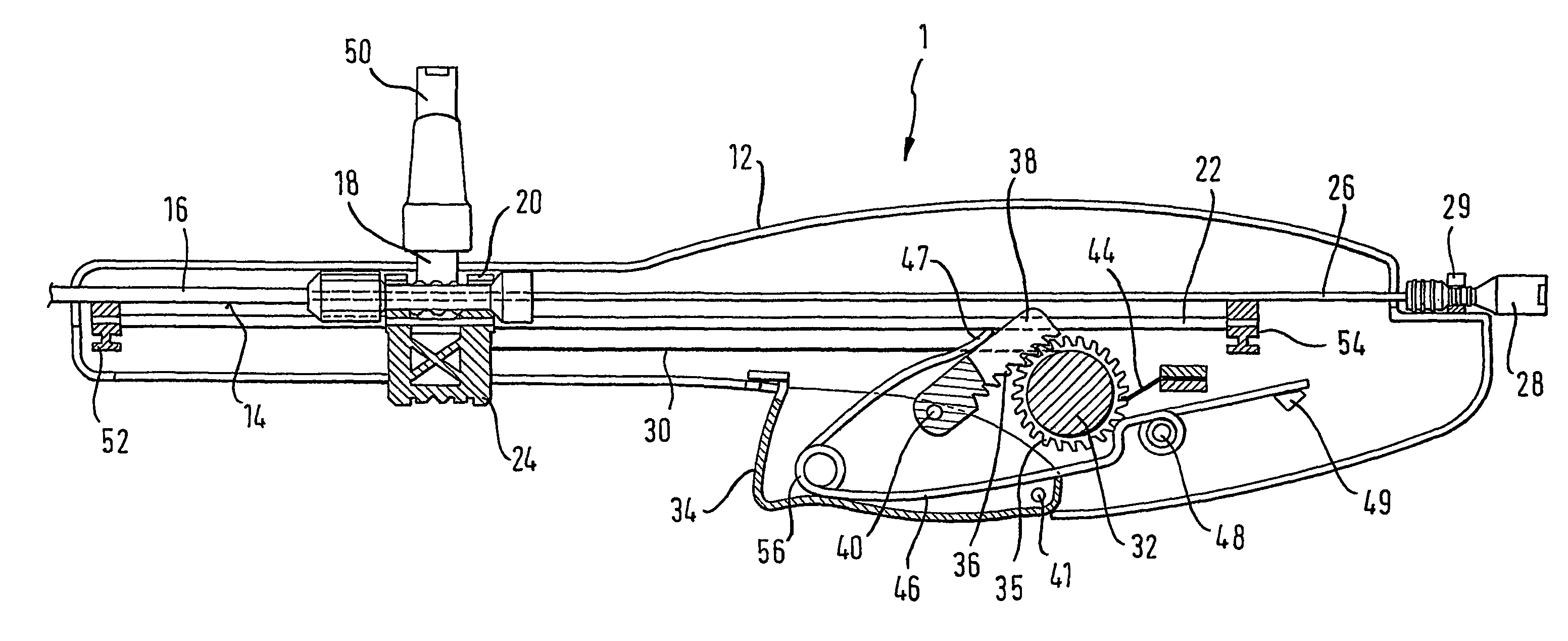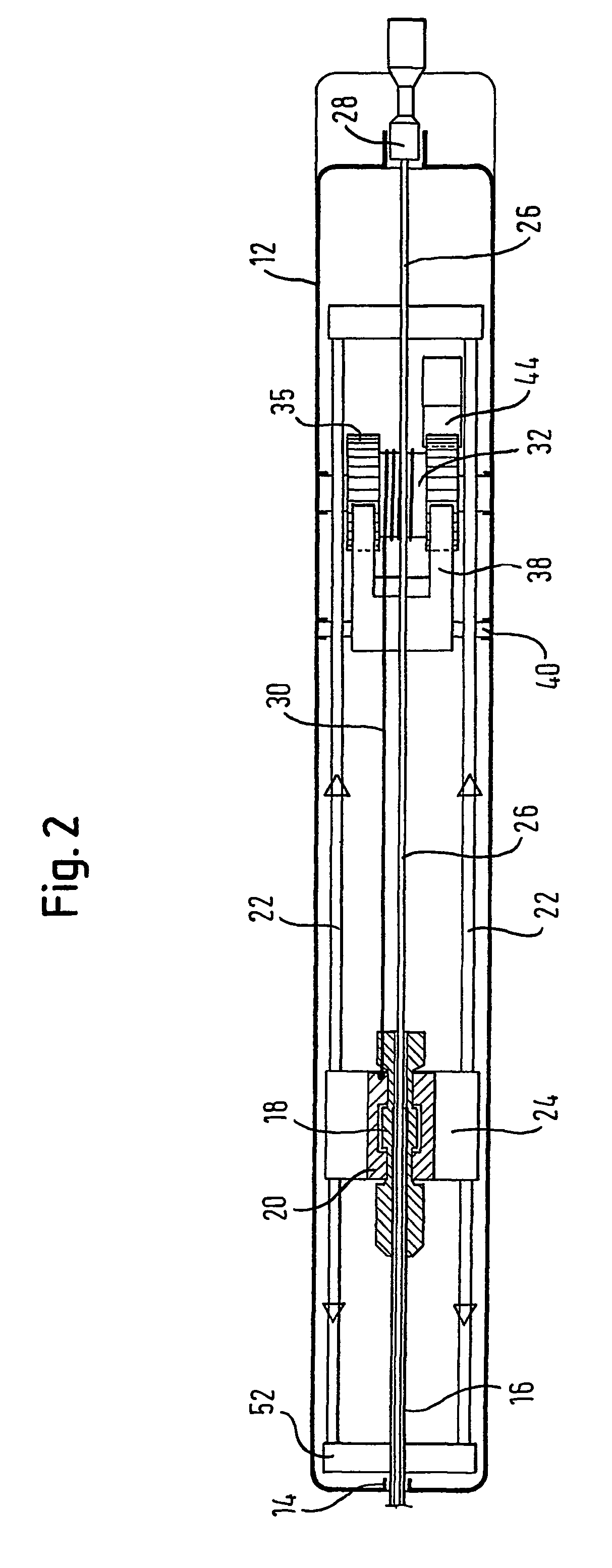Stent delivery device and method for stent delivery
a technology for medical prostheses and stents, which is applied in the field of devices and methods for delivering stents, can solve the problems of inability to precisely place stents exactly as required, inability to meet the requirements of stent placement, and inability of medical practitioners to some extent, so as to avoid imposing unacceptable axial stresses and minimise the imposition of unwanted stresses. , the effect of accurate and precise control
- Summary
- Abstract
- Description
- Claims
- Application Information
AI Technical Summary
Benefits of technology
Problems solved by technology
Method used
Image
Examples
Embodiment Construction
[0028]The drawings are of a preferred embodiment of the invention and FIG. 1 shows one half 12 of a moulded housing of which the other half lies above the plane of the drawing.
[0029]The two housing halves define, in an assembled state, a track 14 in which can be laid the proximal end of a co-axial stent delivery device having an outer tube 16. Track 14 is formed by mating axial recesses in the two housing halves, resulting in a semi-circular channel open to the upper end in FIG. 1 of the housing.
[0030]The proximal end of the outer tube 16 carries a hub 18 which is received within a yoke 20 of a slider 24 which itself runs on a pair of rails 22. The rails 22 are not integral moulded parts of the housing and are held in place by advancing a first one of the rails through a hole (not shown in FIG. 1) and through fixing part 52 and feed hole in slider24 at the distal end of the housing and into blind hole at fixing point 54 distal from the proximal end of the housing. The distal end of ...
PUM
 Login to View More
Login to View More Abstract
Description
Claims
Application Information
 Login to View More
Login to View More - R&D
- Intellectual Property
- Life Sciences
- Materials
- Tech Scout
- Unparalleled Data Quality
- Higher Quality Content
- 60% Fewer Hallucinations
Browse by: Latest US Patents, China's latest patents, Technical Efficacy Thesaurus, Application Domain, Technology Topic, Popular Technical Reports.
© 2025 PatSnap. All rights reserved.Legal|Privacy policy|Modern Slavery Act Transparency Statement|Sitemap|About US| Contact US: help@patsnap.com



